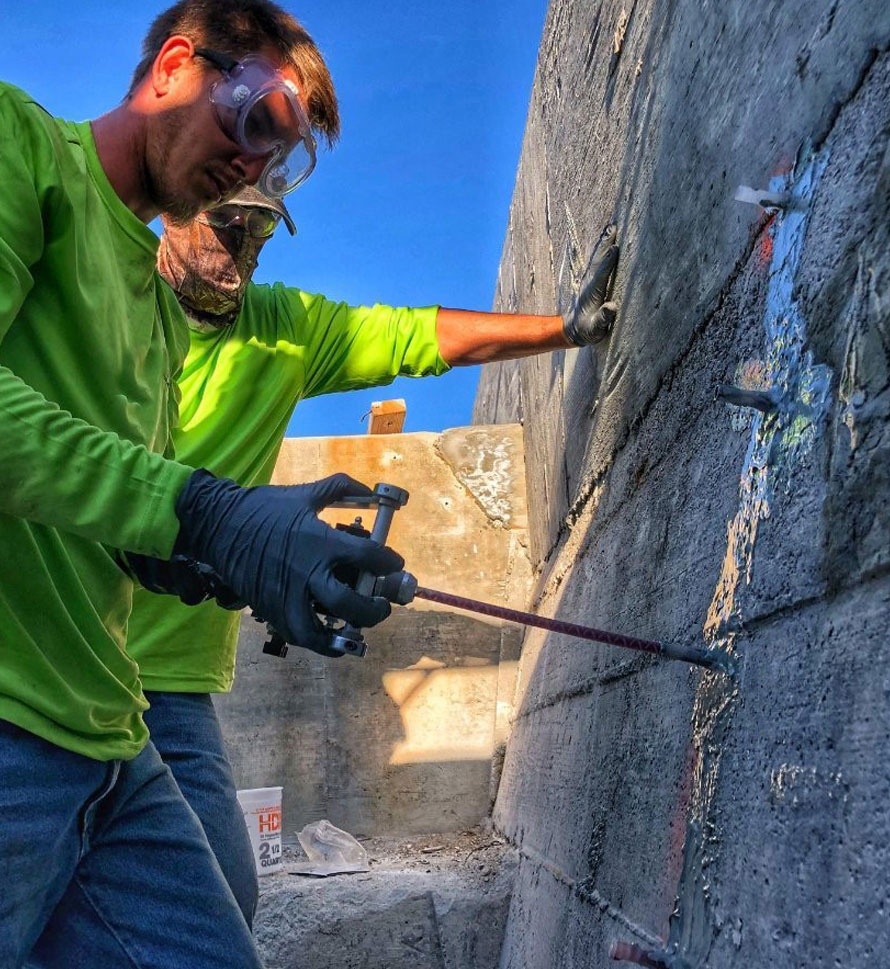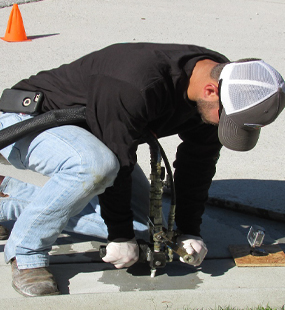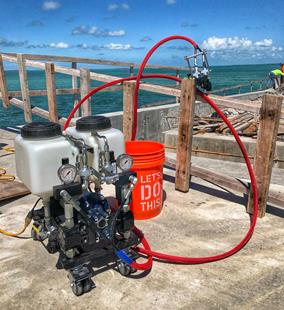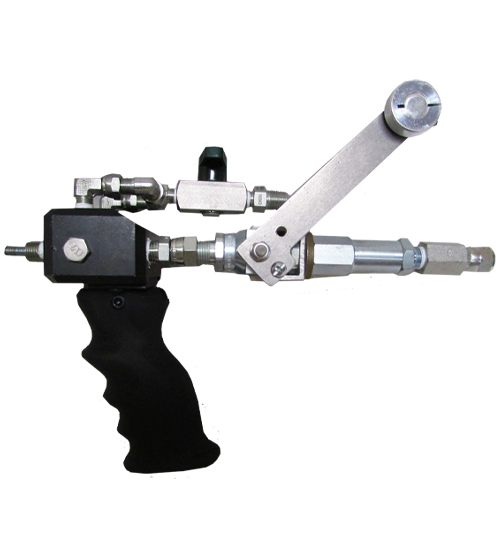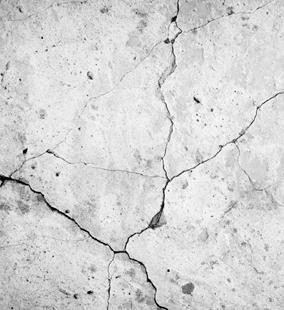
- Home
-
Solutions
-
Leak Seal
Seal leaks in concrete or masonry with crack injection and curtain grouting of our Prime Flex polyurethanes and AR acrylate resins. Prime Resins offers superior solutions for stopping leaks in every type of environment.
Read More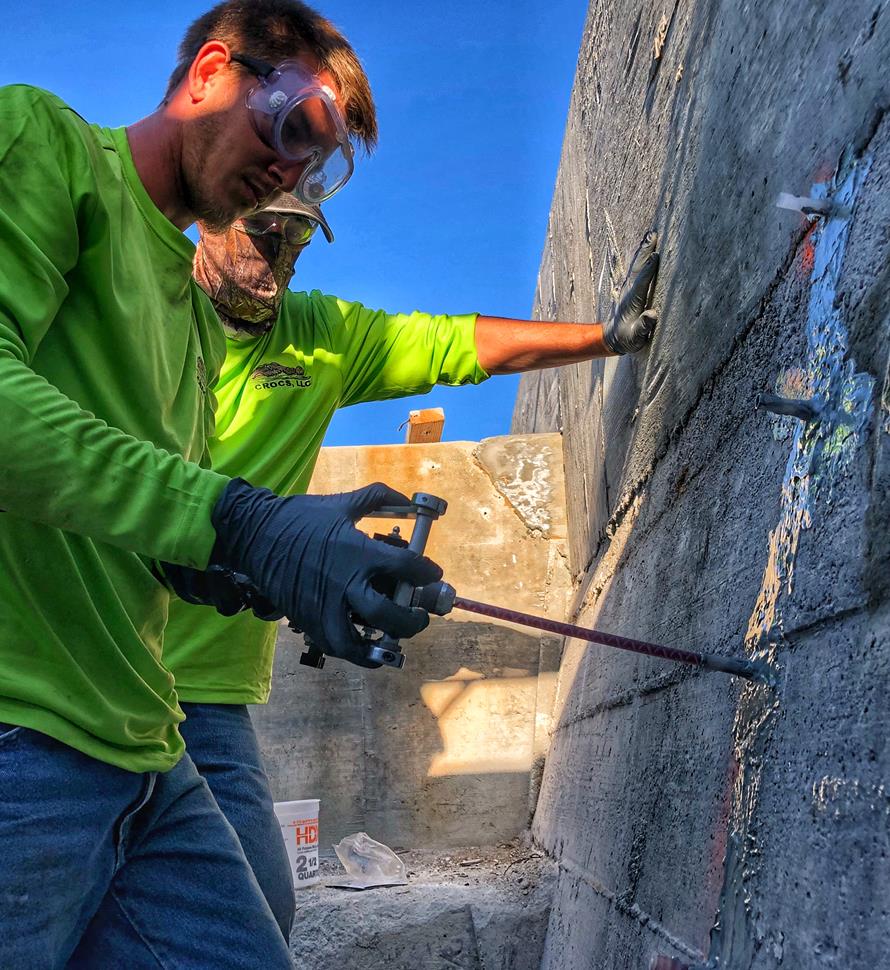
-
Soil Stabilization
Sound concrete relies on a sound substrate. Stabilize soils and fill voids with our polyurethane and acrylate foams and gels. We make chemical grouts for permeation and compaction grouting in wet and dry conditions.
Read More
-
Slab Lifting & Stabilization
Slab lifting and slab stabilization with polyurethane foams offers many advantages over traditional mudjacking. Only Precision Lift is engineered to tackle underlying issues and slab lifting with precise, dependable results.
Read More
-
Floor Repair & Joint Protection
Spalled concrete is concrete that is chipped, cracked and deteriorating. This often happens at a joint.
Read More
-
Seawall Repair
You can repair a seawall or bulkhead with Prime Resins chemical grouts: fill voids, stabilize loose soil and seal leaks at a fraction of the cost of wall replacement.
Read More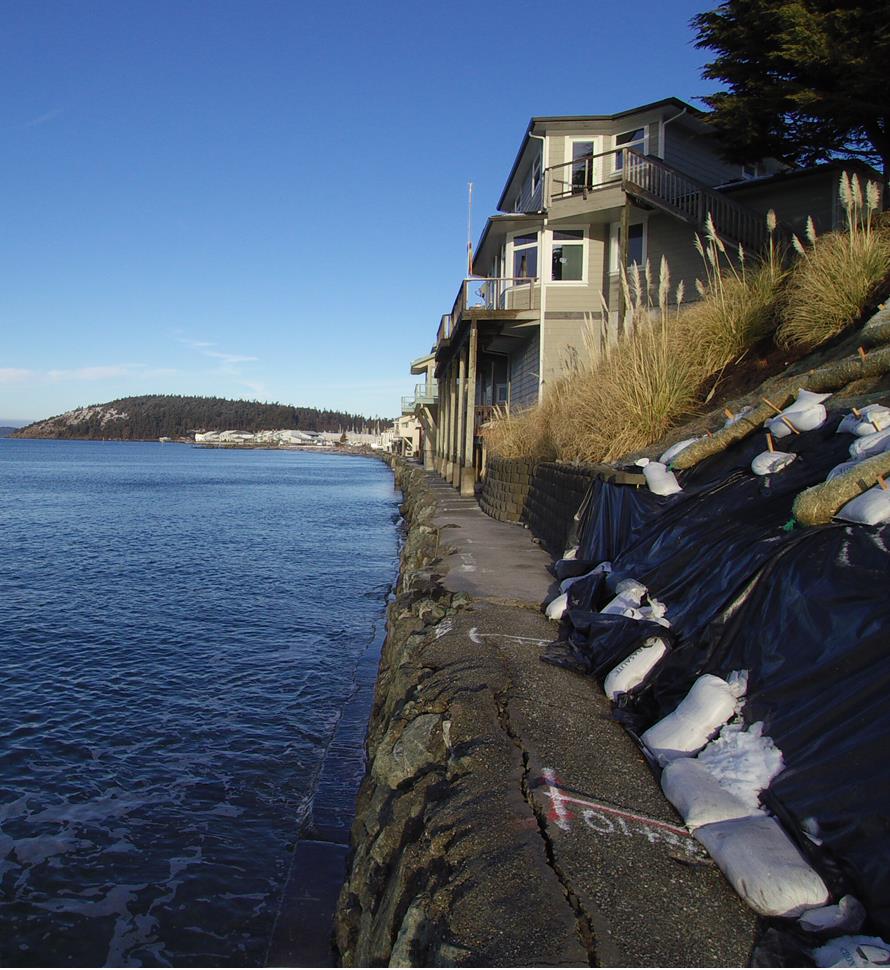
-
Structural Repair / Bonding & Anchoring
The need for crack repair in concrete structures can be caused by many different factors. Damage can occur to the concrete in situations where direct impact puts stress on one area of the structure.
Read More
-
Highway & Bridge
The geotechnical needs of DOTs and other agencies responsible for roads and bridges are vast. Issues include: Culvert repair Soil stabilization Void filling Concrete slab lifting Sinkhole remediation Slope control Slough control in tunneling
Read More
-
Waterproofing & Secondary Containment
Protecting concrete usually means shielding it from the elements of nature or from harsh manmade chemicals. But it’s not just concrete that needs such protection. Corrugated metal pipe, steel surfaces, material hoppers, rail cars and masonry all can come in contact with corrosive or abrasive materials or harsh conditions.
Read More
-
Leak Seal
-
Products
- Leak Repair
-
Soil Improvement
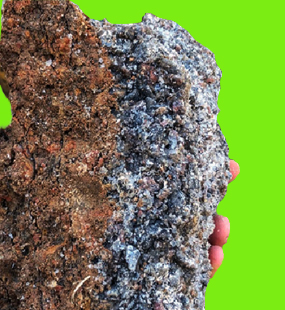
- Soil Stabilization
- Slab Lifting
- Structural Repair / Bonding & Anchoring
- Pumps
- Dispense Guns & Applicators
-
Turnkey Trailer Rig
Are you ready to hit the ground running doing concrete leveling with polyurethane foam? Prime Resins offers the industry’s best suite of products for lifting concrete as a turnkey, fully equipped trailer rig.
Read More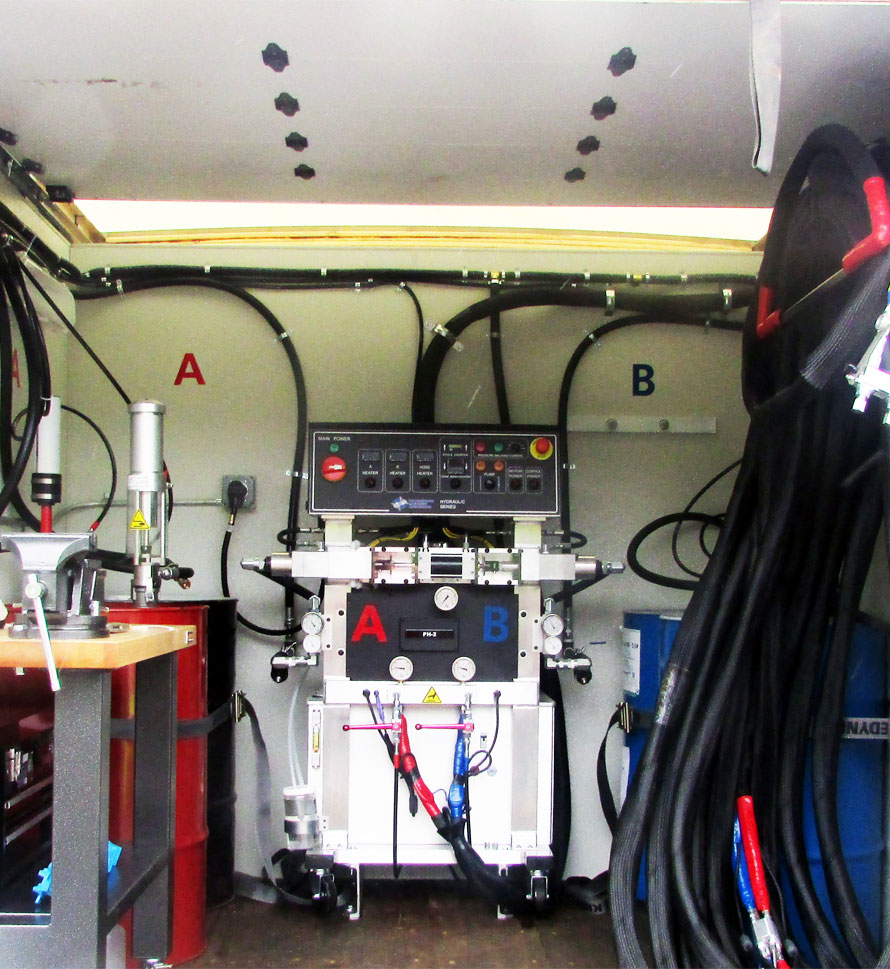
-
Accessories (General)
- 3/4" expendable drive point
- 3/8" and 3/4" soil probes
- Cartridge / Port Connectors and Mixers
- Conduit Seal Kit
- Eco Flush
- F Valve
- Flush Wand
- Grout Needle Kit
- High Pressure Control Valve
- High Pressure Mechanical Ports
- Kick Fast
- Low Pressure Plastic Ports
- PR11 TEA (used w/ PR10 ACLM)
- PR12 APSF catalyst (used w/ PR10 ACLM)
- PR17 LYTX
- Prime Kat
- Prime Plug
- Prime Solvent CGC
- Oakum
- Soil pipe jack
- Stainless Steel Grout Needle & Kit
- StainShield
- Wall Stinger Nozzle
-
Soil Grouting Accessories
- Pipe Coupler
- Pipe Coupler Ferrule
- Buttonhead Coupler - Straight
- Buttonhead Fittings
- SG 3/4" Expendable Drive Tip
- SG 3/4 Rod - 39" Base
- SG 3/4 Rod - 39" Connector
- SG 3/4 Rod - 19.5" Base
- SG 3/4 Rod - 19.5" Connector
- SG 3/4 Fitting - Pipe to Buttonhead
- SG 3/4 Fitting - Buttonhead Fitting
- IL 1/2" Drive Point
- IL 1/2" rod - 39" base
- IL 1/2" rod - 39" connector
- IL 1/2" Fitting Buttonhead
- SG 3/4" Fitting - Buttonhead Coupler
- SG 3/4" Slotted Drive Tip
- SG 3/4 Drive Head
- Modified Pipe Jack Soil Grouting
- SG 3/4 Fitting - Buttonhead Coupler
- Pagani DPM30 Penetrometer
- IL 1/2" Fitting - Buttonhead to Connector Rod
- IL 1/2" Rod to Rod Coupler Fitting
- High Pressure Flow Control Valve
- Buttonhead Coupler - 90°
- Buttonhead Clamp Kit
- DPM30 Penetrometers
- Floor & Joint Repair
- Waterproofing & Secondary Containment
- News
- Downloads
-
Tools
-
Case Studies
Prime Resins takes pride in its ability to find the right solutions to the problems facing our customers. Here are some examples of customers’ successful jobs:
Read More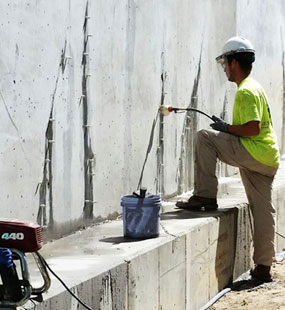
-
Prime Practices
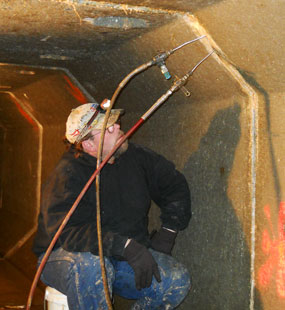
-
Videos

-
Estimating Tools & Info.

-
Why us?
The superior quality of products at a fair price, our consultative approach, and our unparalleled technical support set Prime Resins apart. Learn more about the Prime difference.
Read More
-
Product Types & Typical Uses
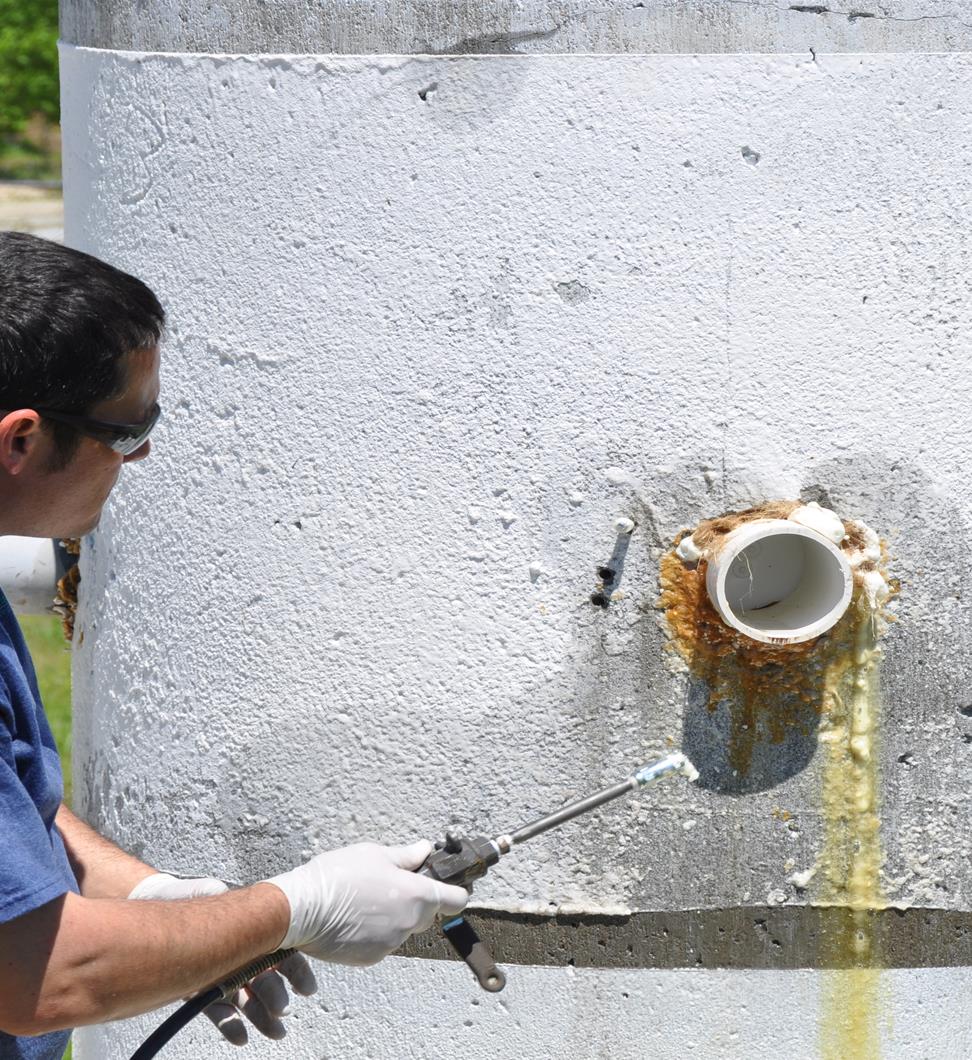
-
Looking for a contractor?
-
Certifications
-
Podcasts
-
Case Studies
- Contact

Prime Practices
Anchoring Bolts, Dowel Bars and Rebar with Epoxy
Epoxy Application Guide
The most critical aspects when using epoxies are surface preparation and material mixing. Other factors include proper application technique and the effects of temperature on the mixing, applying and curing of the material.
Information on the technical data sheet for the individual Prime Resins products will help you choose the right product for a specific application, these instructions supplement that information and includes more detail to aid specifiers and applicators alike.
When epoxies are used correctly, they are a premium product for structural concrete repair and preservation; however, there are applications where other materials are appropriate. If you are not sure which product to choose, call your technical consultant or the main number at 800-321-7212.
How-To: Anchoring Bolts, Dowels and Rebar With Epoxy
Epoxy can be used for anchoring bolts, dowels and reinforcing bars, i.e. rebar, into concrete and masonry. These systems exhibit high bond, tensile and compressive strengths and are moisture insensitive after curing.
Selecting the correct product
Use Prime Bond 3000 to produce pourable grout for horizontal applications.
Use Prime Bond 3900 LPL for horizontal applications where long pot life is desired.
Use Prime Gel 2000 to produce non-sag grout for vertical and overhead applications.
Application procedures
Be sure to use proper personal protective equipment as outlined by OSHA or the relevant work safety authority in your location. Consult the SDS for the specific product you are using for safety, first aid and clean up information.
A. Hole Dimensions
The annular space between anchor and hole should be as small as possible, yet still provide ease of placement. Depth of embedment guidelines:
1- When the substrate has compressive strength of 3000 psi and greater, or the anchor bolts are threaded, the minimum depth is 10 times the bolt diameter.
2- When the substrate has compressive strength less than 3000 psi or when grouting smooth bolts, the minimum depth of embedment is at least 15 times bolt diameter.
B. Surface Preparation
Bolts, dowels or rebar must be clean, dry and degreased.
Dry Drilling: vacuum or blow out hole using oil-free compressed air
Wet Drilling: wash out hole with clean water to remove residue of drilling slurry. Remove standing water. It is preferable to allow the hole(s) to dry.
C. Mixing
For ease of mixing and handling, epoxy and aggregate should be conditioned to 70°F (21°C). Stir each component separately, scraping the sides and bottom of the container. Blend both components together and mix completely using a slow speed drill at a maximum 600 RPM for 2-3 minutes. Add clean, dry 30-50 mesh silica sand as specified and mix thoroughly.
Ratios and yields
| Surface | Epoxy | Max. Amt. 30-50 mesh Silica Sand | Approx. Yield |
| Horizontal | Prime Bond 3000 or Prime Bond 3100 |
2 parts by volume | 508 cubic inches |
| Prime Bond 3900 LPL | 3 parts by volume | 646 cubic inches | |
| Vertical/Overhead | Prime Gel 2000 or Prime Gel 2100 |
1 part by volume | 369 cubic inches |
D. Installation
For horizontal surfaces, two methods are acceptable.
1- Pour epoxy grout into the hole and insert bolt, dowel or rebar and work it up and down. Lightly tap to ensure complete embedment.
2- Insert bolt, dowel or rebar into drilled hole and pour epoxy grout around it. Use template or wedges if necessary to hold in position.
For vertical and overhead surfaces:
Place epoxy grout into drilled hole with hand or power operated bulk caulking gun with large diameter tip and polyethylene extension tub. Insert bolt, dowel or rebar and work back and forth to ensure complete embedment. Position in place with template or wedges if necessary.
E. Curing
The cure time is dependent upon the temperature of the substrate. To accelerate cure, pre-heat bolts to approximately 150°F (66°C) at the time of installation and maintain artificial heat on bolt and surrounding area.
F. Cleaning
Prior to curing, epoxies may be removed from tools and equipment using Xylene or lacquer thinner.



